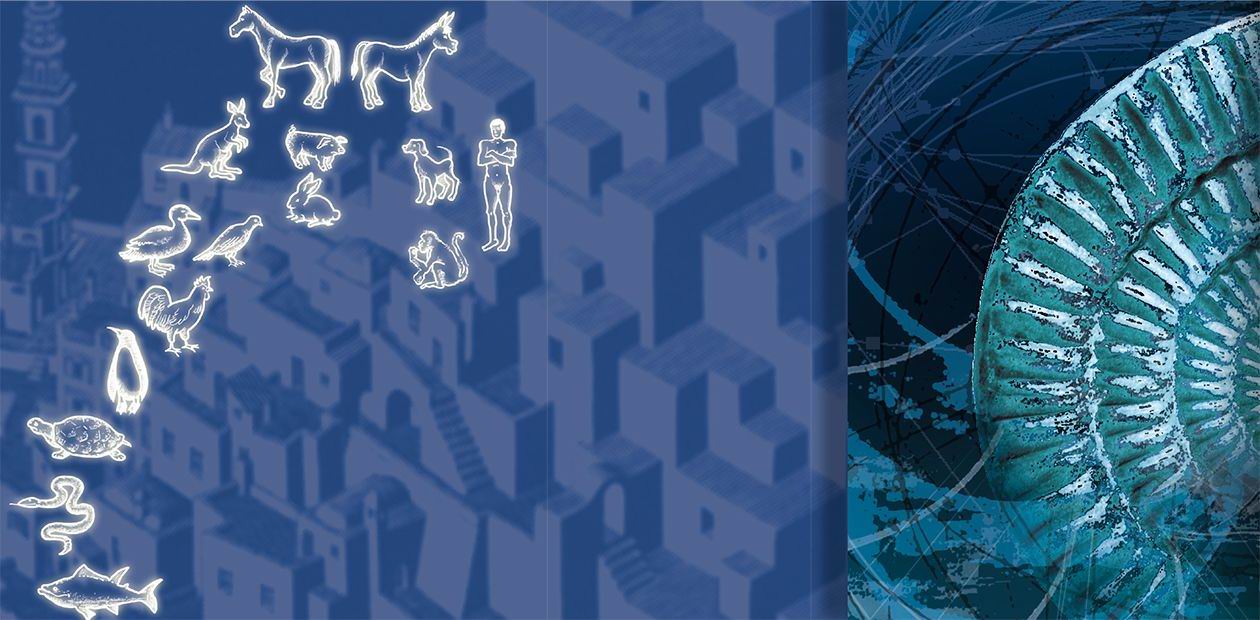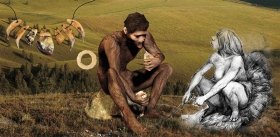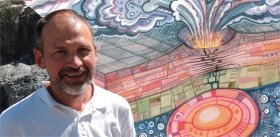Searches for a Periodic System... in Evolution
For more than 100 years since the rediscovery of Mendel’s laws, biology has sought to become an exact science like chemistry and physics, but it is still too specific and detailed. Researchers, however, have continued efforts to systematize and formalize our knowledge of biological processes and mechanisms in searches for a peculiar periodic system in biology. This is true to an even greater extent for research into the evolution of biological systems, recalling Dobzhansky’s idea that any problem in biology makes no sense if it is not relevant to the theory of evolution.
STARTING FROM THE BEGINNING
Since the times of Charles Darwin, no one has constructed a good alternate theory of evolution despite repeated statements to the contrary. The fundamental principle of natural selection has not yet been overturned. But as to more subtle mechanisms, by and large, our notion of evolution is only a mirror that reflects the completeness of our knowledge of the structure and functioning of biological systems. And if we do not like the image, we should not blame the mirror. This refers to the specific weight of the various mechanisms involved in the evolutionary process, starting with horizontal gene transfer.
It should be noted that earlier searches for the fundamental principles of evolution have been performed exclusively at the morphological level; recently, the emphasis has moved to the molecular level. Let us take a look into the past in order to better imagine the ‘evolution’ of our notion of evolution.
IN THE BEGINNING WAS A POPULATION
The modern synthetic theory of evolution is based on advances in genetics. However, at the beginning of the 20th century, the first exponents of the new science were themselves notorious anti-Darwinists, who asserted that new species are born exclusively as a result of mutations, without any involvement of natural selection. This continued until 1908, when the English mathematician G. Hardy and the German physician W. Weinberg independently formulated the famous law that explained the preservation of variation during genetic transmission of traits from parents to offspring, as observed in nature. This event marked the birth of the most formalized area in biology — population genetics.
At present, the synthetic theory of evolution or its modern versions are dominant. Although the theory is believed to be based on advances in genetics this was not ‘love at first sight’
The Hardy–Weinberg law is a fairly simple mathematical formula, according to which the variability in a population remains at the same level under constant conditions. Equilibrium populations, however, are rare in nature: various environmental factors lead to changes in gene frequencies (concentrations) in a population. This is already an elementary microevolutionary event. By the way, the proposition that the unit of evolution is a population rather than an individual was formulated by the expert of Russian genetics N. Timofeev-Resovsky, and the terms macroevolution and microevolution were coined by Yu. Filipchenko, who was the first in Russia to deliver a series of lectures on the theory of inheritance and evolution (1913).
Russian scientists N. Dubinin and D. Romashov were the first to speak of autogenetic processes in populations, i. e., microevolutionary events that are not directly related to natural selection. This means that in addition to directional changes of populations under selection, gene frequencies can change randomly under sudden changes in the number (‘life surges’), sex ratio, and other features. It is interesting that the process of random genetic drift has been modeled by circulation of balls of different colors which represent different gene variations. These concepts were the precursor to the future theory of neutralism, which seemed to shake the foundations of the theory of evolution. But we shall explore this below.
MOLECULAR GENETICS ‘BIBLE’
Let us follow the same historical path, now tracing the development of the concepts of genes as elementary units of genetic information.
Everything began with Mendelian hereditary factors, which were called genes by the Danish scientist W. Johanssen (1909). Studies by T. Morgan and his disciples showed that genes, which are parts of chromosomes, mutate as integral entities and control specific traits in organisms. The discovery of the effect of ionizing radiation on the mutation process has provided a tool for studying the length, structure, and divisibility of genes, and the pioneer in this field was A. Serebrovsky, the founder of the Chair of Genetics of Moscow University.
Subsequently, G. Beadle and E. Tatum put forward the hypothesis that one gene encodes the synthesis of one enzyme. Next, J. Watson and F. Crick identified a gene as a DNA segment and deciphered the properties of the genetic code. The French scientists F. Jacob and J. Monod discovered the phenomenon of genetic control of enzyme synthesis in bacteria, which shed light on the real mechanism of gene activity regulation. S. Benzer and Ch. Yanovsky found that the smallest changeable unit within a gene is a pair of nucleotides. At this point, we move from biological to purely chemical concepts.
I may receive abuse but I state that there are no ‘special’ mechanisms of evolution
As a result, the central dogma of molecular biology — a general concept of the structure and operation of genes — was formulated. It states that the flow of genetic information recorded in DNA moves to messenger RNA and then to protein molecules. This flow is a one-way road: information that has entered protein never leaves it! A coding DNA sequence cannot be synthesized from protein’s amino acid sequence, which supports the law that acquired characteristics cannot be inherited.
ONE PRINCIPLE DOES NOT HINDER ANOTHER ONE
The above-listed results have led to the illusion that everything is arranged in the same way in everybody. This seemed true enough since the metabolism pathways in all living organisms are indeed very similar. For example, the synthesis of any nucleotide is identical in both yeast and man. Ribosomes — protein production plants — have almost identical structures in different organisms. The synthesis of messenger RNA is also a universal mechanism.
When looking closely, we find clever variations on a given theme rather than radically new evolutionary acquisitions. A reasonable suspicion arises that there are certain universal structures, which are verified in the early stages of evolution and are then replicated and used by very different organisms. This is a fine illustration of one of the basic principles of biology — the principle of biological universality!
However, following the laws of philosophy, this principle is balanced and supplemented by the principle of biological specificity. For example, it has been established that the organization of genetic material and the structure of genes vary significantly among different organisms. The natural question arises: is it possible to identify any universal patterns and to find regularities in this genetic diversity of living things?
BUNCH OF EVOLUTIONARY TRENDS
Let us try to find fundamental differences between organisms by comparing the genomes of prokaryotes (unicellular organisms without a cell nucleus) and eukaryotes, in which the genetic material is contained in membrane-bound cell nuclei. It is believed that the more advanced eukaryotes derived from prokaryote and are approximately 500 million years younger than the latter.
What do we see? Bacteria, which belong to the prokaryotes, are characterized by an operon organization of the genome. This feature allows bacteria to switch metabolism from one nutrient to another, which helps them respond effectively to environmental changes. In bacteria, the structural genes that encode the enzymes of a particular pathway of biosynthesis are organized into an operon — a group of genes that share a common regulatory element. This is the template for the synthesis of the entire molecule of messenger RNA, in which the enzymes of all steps of biosynthesis are encoded. In eukaryotes, including fungi, operons have not been found and the same structural genes can be located on different chromosomes. Thus, it is possible to distinguish the first trend in genome evolution — the trend toward gene autonomism.
This is in seeming conflict with another trend — toward oligomerization of genomes, during which some genes that have previously existed separately are fused into a single gene. The protein molecule encoded by this gene serves as an enzyme in several metabolic reactions simultaneously. As the biological organization becomes more complicated, from fungi to drosophila and humans, the number of such metabolic reactions catalyzed by one enzyme protein increases.
The development of the molecular paradigm in the 1960s created an illusion that was most vividly reflected in Jacques Monod’s pun “What is true for E. coli, is true for E. Lephant” (What if true for colibacillus, is true for elephant.)
Another interesting trend is the occurrence of a mosaic gene structure. In eukaryotes, the structural genes consist of different segments — introns and exons. Introns are not encoding sequences and do not carry genetic information. On such a split gene, the corresponding RNA molecule is formed; then, the segments corresponding to introns are cut out and the remaining segments — exons — are spliced together. Only this resulting RNA becomes the template for protein synthesis.
Parasitic organisms have another surprising property — gene overlapping. Viruses, for example, have very small genomes but large information needs. They have found a way out of this difficult situation: their genes are nested in one another like Russian matreshka dolls.
Now, having considered the major trends in the organization of genetic material, we proceed to more global generalizations. Remember that we live in the epoch of genomics, and the genomes of many organisms have already been deciphered. Today we can see what we have known from intimate impulse: during evolution, the number of genes increases! How do new genes and, hence, new proteins and functions arise?
MOLECULAR CLOCK OF EVOLUTION
This problem is difficult and cannot be solved only on the basis of horizontal gene transfers alone, even though they happen to be involved. Population genetics has proved that the emergence of great novelties cannot be attributed to simple mutations, just as the descent of man from monkey cannot be explained merely by single-base mutations. There would have been no time for this process — clever priests have long reached this conclusion.
Simple single-base mutations in a population lead to polymorphism, i. e., the existence of different versions of the same gene. According to the neutralism theory by the Japanese scientist M. Kimura, only those mutations are retained in a population that does not affect the functions of the protein (neutral mutations). Indeed, up to 10 % of the nucleotide sequences of genes and the corresponding amino acid sequences of protein undergo such neutral replacements without obvious detriment to the functioning of the active centers of the protein molecules.
Using this idea, E. Zuckerkandl and L. Pauling invented an ingenious and practical method: the molecular clock of evolution. If neutral mutations are indeed retained and the mutation process goes at a constant rate, the evolution time can be calculated from the number of neutral replacements. Unfortunately, as always, there is a fly in the ointment: it turned out that different genes accumulate neutral mutations at different rates, and the evolutionary trees constructed on their basis may vary considerably in height. Thus, we cannot avoid a traditional study of geological layers.
CREATOR’S MECCANO
But we have digressed somewhat. It is clear that evolution cannot occur by single-base mutations. What is the driving force of the evolutionary process, and more particularly, how does anything radically new emergein nature?
The block or block-modular principle in the theory of evolution implies that all living things have originated from an originally small number of certain invariant domains, which subsequently were variously combined
The Japanese scientist S. Ono proposed a simple and clear mechanism: evolution occurs by replicating existing genetic structures and their subsequent divergence. Furthermore, it does not matter how new gene copies arise in genomes: with the aid of migrating genetic elements or special enzymes duplicating DNA segments. The main thing is that there is a real physical potential for multiplication of both individual segments and chromosomes or the entire genome.
Generally, biology as a science has lots of exceptions. The point is how meaningful is each particular case or phenomenon?
Anything is possible! Part of the copies can be lost, and others are retained; different genes can be lost from different copies. By the way, if you have two copies of the same gene, one of them can operate, and the other can mutate freely at its own sweet will. The latter successfully avoids the pressure of natural selection and begins to accumulate mutations at a high rate. Thus functionally inactive pseudo-genes arise. But do not assume that such pseudo-genes simply become a waste basket: their genetic material can be useful for the creation of new genes. In principle, pseudo-genes are occasionally capable of being activated in order to appear before the court of natural selection.
The aforesaid leads to a fairly simple and clear conclusion (we shall call it the building-block principle of the theory of evolution): the existing genetic variety has resulted from replication and combination of a small number of initial genetic structures. This is a peculiar genetic meccano with which our ‘creator’ (should this word start with a capital letter?) has been playing successfully for many millions years…
The ‘central dogma’ of molecular biology, according to which genetic information recorded as a DNA base sequence specifies the base sequence of the daughter polymer RNA, which, in turn specifies the amino acid sequence in the protein. The straight lines denote information transfer and the circular lines molecular reproduction. The solid and dashed lines indicate ordinary and extraordinary process in living systems, respectively. The information transfer in the macromolecule structure can occur only from DNA to proteins but not in the opposite direction. Actually, the central dogma is a modern (molecular) analog of Weismann’s old postulate that acquired characters cannot be inherited.
(F. Crick, On protein synthesis, Symp. Soc. Exptl. Biol., 1958, Vol. 12, p. 138–163)














